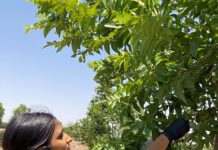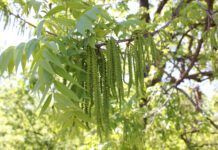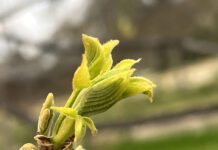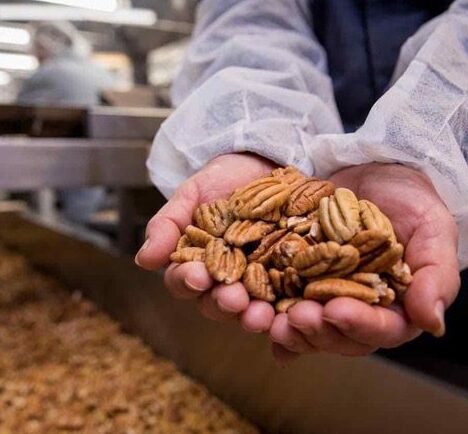
Controlling the aphid complex, judicious pruning and meeting water requirements are standard practices to ensure good yields and high quality in California pecan orchards. The entire U.S. pecan industry has also taken steps to assure customers receive the quality they expect.
According to the federal marketing order under the American Pecan Council, the revised USDA shelled grades and standards for pecans will help handlers more closely meet customer expectations and standardize terminology across the pecan industry.
The updated grades and standards which went into effect in July are not mandatory for sales but meeting them will allow for USDA certification which is often requested by foreign buyers. The USDA will also use the revised standards to evaluate the product. The grade standards are available for use by producers, suppliers, buyers and consumers. The update includes revised scoring guides for defects, creates new size parameters and offers revised definitions of color.
Process Began in 2018
Anne Warden, CEO of American Pecan Council, said the industry has been using 1969-era grades and standards for their products. The update efforts, a collaboration with the National Pecan Shellers Association, began in 2018 and included two comment periods and several drafts before the final document was released. Stakeholders were also involved in the process.
“It was time for the industry to change,” Warden said.
Use of different terminology in product description did not allow customers to effectively compare products, Warden said. U.S. quality could not be differentiated from global competitors, and pecans were behind other nut competitors on improving standards in place.
Warden said industry stakeholders provided feedback for the revisions, expanding the quality grades for in-shell pecans and shelled product, aligning terminology within the standards for pecans in the shell and shelled meats. They also updated the minimum percentages under tolerances and moisture content restriction language.
The goal of the new grades and standards is to provide a universal language with more specificity on sizing for customers. Pecans are grown across southern and midwestern states, and with highly variable growing conditions, the industry was seeking to bring more consistency to the product.
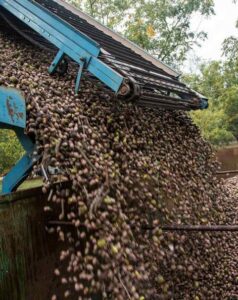
For example, sizing of pecan halves under the old standards just listed them as No. 1 or commercial. The new standards provide more definition to help customers understand the sizes. The new U.S. Extra Fancy consists of kernels with a moisture content of not over 4.5%, uniform in color and not darker than light, free from damage and uniform in size. U.S. Fancy has similar requirements but is allowed a darker color.
In the revision, U.S. Choice shells are described as fairly uniform in color and free from damage. Kernels are not poorly developed, moisture content not more than 8% and not darker than amber. U.S. Standard has no requirement for fullness of kernel or uniformity of color for shells or kernels. This grade may also contain kernels that are darker amber.
The revised voluntary grades and standards for pecan halves have seven size classes compared to eight in the previous specifications. The number of pieces allowed is lower at 10% in premier halves compared with 15% in the U.S. No. 1.
Kernel damage limits will be lowered from 8% in U.S. Commercial halves and pieces to 5% in Fancy halves. Fewer dark-colored halves and pieces will be allowed.
The council also emphasized as the standards and grades are implemented by the industry, ‘tweaks’ would be inevitable and made as needed. One change already made was to allow unsold 2023 crop nuts to be sold under the old grades and standards.
The American Pecan Council reports the greatest chance of growing the U.S. pecan industry will come from remaining united across the supply chain and across all pecan growing regions.
“While the new standards will face a few hiccups, we can say with confidence to our customers we produce the best pecans in the world and we are a unified industry focused on growth,” APC reported.
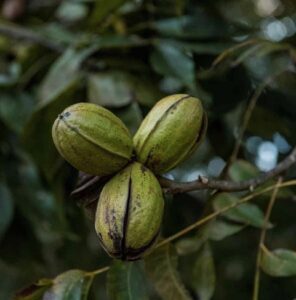
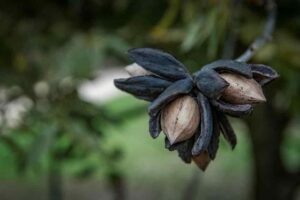
California Consistency
While the bulk of U.S. pecan production is found in southern and midwestern states, California pecan growers can claim a consistent product due to management practices geared toward quality. California pecan growers produce about 7 to 8 million pounds on approximately 6,000 acres annually while the entire U.S. pecan production is 250 to 300 million pounds.
Keith Larrabee of Chico-area Larrabee Farms said in mid-August it was a little too early to tell crop size, but the crop did appear light. He said pecan growers in the north part of the state have had three ‘pretty good’ years of production, so a lighter crop could be expected in 2024.
Pecan production in California is pretty stable, he noted, as not a lot of large-scale tree removals or new plantings are occurring. Production is increasing as new plantings begin bearing.
Josh Enos with pecan producer Carriere Farms in Glenn, Calif. said the reports on the 2024 California pecan crop have been mixed, but a smaller crop is anticipated.
Enos said the crop quality this year appears to be good due to less aphid pressure. Kernels are expected to be larger and lighter in color. He said pecan growers in the Northern California area have been aggressive with aphid control and sunlight management to help with quality.
Carriere Farms has about 100 acres of pecans in production. Varieties are Pawnee, Shoshone and Wichita. Carriere has recently opened a processing plant with a new in-shell line for their pecans and for other growers.

Cecilia Parsons | Associate Editor
Cecilia Parsons has lived in the Central Valley community of Ducor since 1976, covering agriculture for numerous agricultural publications over the years. She has found and nurtured many wonderful and helpful contacts in the ag community, including the UCCE advisors, allowing for news coverage that focuses on the basics of food production.
She is always on the search for new ag topics that can help growers and processors in the San Joaquin Valley improve their bottom line.
In her free time, Cecilia rides her horse, Holly in ranch versatility shows and raises registered Shetland sheep which she exhibits at county and state fairs during the summer.







